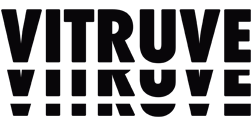10 de October de 2024
Using the Force Velocity Curve to improve specific KPI’s during ACLR Rehab.
Presents practical applications of VBT, focusing on improving strength, reactive qualities, and performance-based metrics throughout the recovery phases. Backed by real-world case studies, it emphasizes a data-driven approach to enhance rehabilitation outcomes.
Download the Case Study on Optimizing ACLR Rehab with VBT
The approach to rehabilitation is evolving, especially for ACLR injuries, where precision in training load and volume is crucial for optimal recovery. Velocity-Based Training (VBT) offers a data-driven strategy that allows athletes to train with accuracy and intent throughout their recovery journey.
Why Download Case Study?
- Comprehensive Insights: Explore how VBT can be applied in ACLR rehabilitation, from early recovery stages to the advanced phase. Learn how to maximize strength development and ensure proper velocity measures throughout the rehabilitation process.
- Actionable Techniques: Implement strategies such as bilateral and unilateral strength exercises, reactive strength training, and velocity-based monitoring to promote balanced recovery. Whether working with elite athletes or rehabilitation patients, VBT offers a framework for individualizing the recovery process.
- Research-Backed Methods: Stay at the forefront of sports science with the latest research on force-velocity curves and its application in rehab settings. Understand the relationship between velocity loss, strength gains, and how to optimize load and bar speed for faster and safer recovery.
Download the document to integrate the latest VBT techniques into your ACLR rehabilitation process!
Download the Case Study
Provides actionable strategies and insights to optimize training load and volume, helping athletes recover faster and more effectively.
